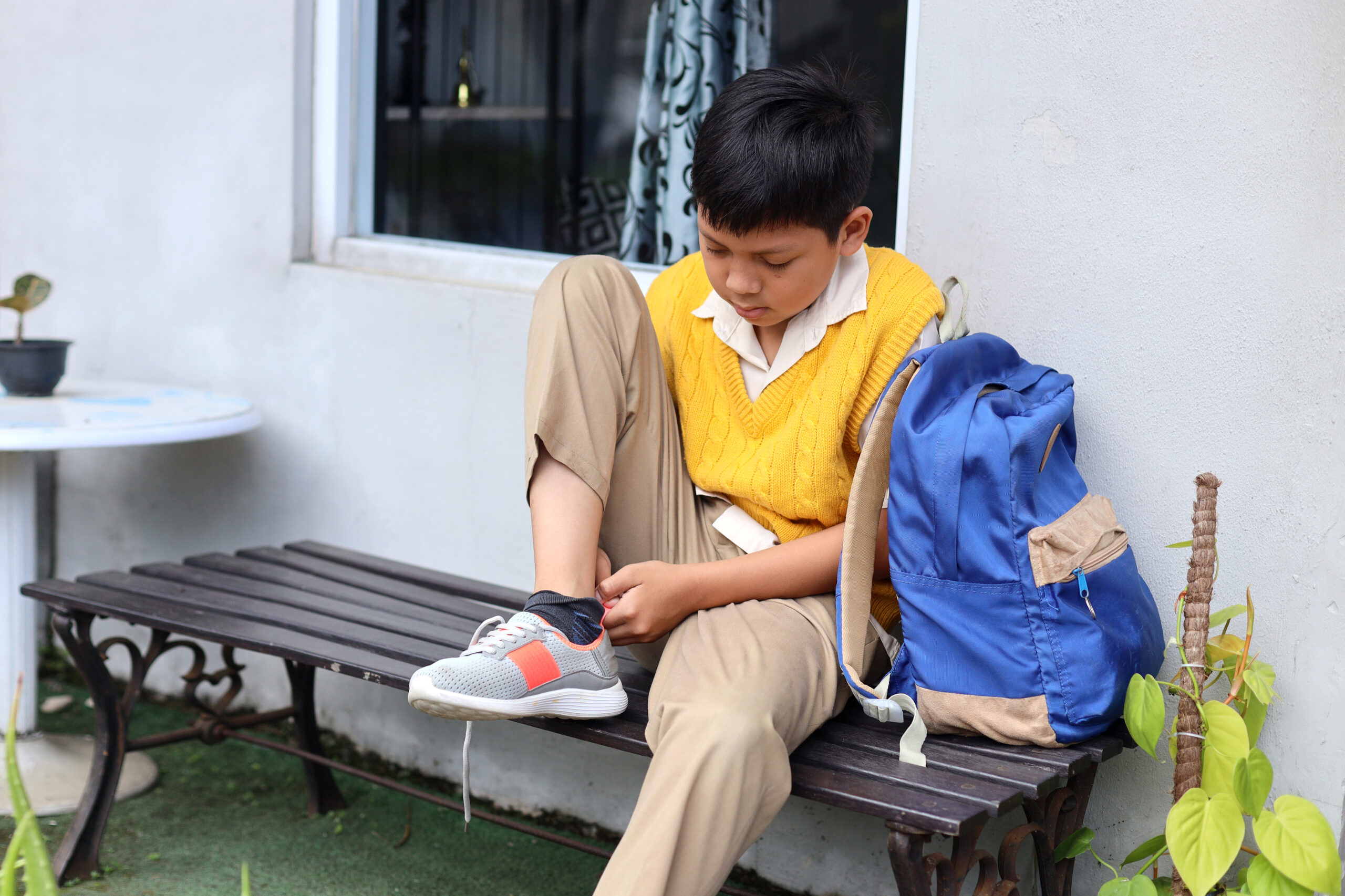What Does Child Support Cover?
18/12/2024

Child support is a plan that helps separated or divorced parents in Australia take care of their child’s basic needs. It makes sure that the child maintains their quality of life, even if the parents don’t live together anymore.

However, the cost to care for a child is not an automatic 50/50 split, especially if one parent is in a stronger financial position than the other. In this guide, we explain what child support covers and what it doesn’t and answer other common questions for co-parents.
What Does Child Support Cover?
There is some flexibility in how the child support money can be used, but it usually covers the following areas:
Housing and utility costs
Child support can contribute to the costs associated with the child’s living space. This includes rent or mortgage payments and utility expenses like electricity, water, and gas. However, it does not include holiday rental costs or other types of leisure stays.

For instance, if a parent lives in a rented home, child support might help pay part of the rent or cover utility bills. Every child has the fundamental right to a safe and warm place to live, and child support plays a crucial role in ensuring this need is fulfilled.
Everyday living expenses
Child support also helps pay for daily essentials like food, clothing, and transportation to maintain a child’s physical well-being. This means that expenses related to meals, appropriate seasonal clothing, and reliable means of getting to school and activities can be supported through child support.
 A custodial parent might use child support to purchase groceries that provide proper nutrition, school uniforms that ensure the child has suitable attire, or cover public transport fees, ensuring the child’s access to education and extracurricular engagements. All these elements are essential for a child’s growth, health, and development, directly contributing to their overall well-being and stability.
A custodial parent might use child support to purchase groceries that provide proper nutrition, school uniforms that ensure the child has suitable attire, or cover public transport fees, ensuring the child’s access to education and extracurricular engagements. All these elements are essential for a child’s growth, health, and development, directly contributing to their overall well-being and stability.
Education costs
Child support also helps cover essential educational expenses, such as public school fees, textbooks, uniforms, and stationery. For children with special needs, the support may extend to necessary tools or learning programs, including speech therapy or assistive technologies.

For example, if a child requires extra tutoring to support their academic progress, child support can be used for those lessons. Education is essential for a child’s future, and access to proper resources can significantly influence their success. This ensures that children have the tools they need to succeed academically, regardless of their parents’ separation.
Healthcare and medical costs
Ensuring a child’s health is a top priority, so routine medical care, including visits to the doctor and basic dental check-ups, is typically covered by child support. However, more significant medical expenses, like orthodontics (braces) or optional specialist treatments, are generally not included.

If a child requires regular medication for a condition such as asthma, for example, child support will typically cover these ongoing medical costs. However, elective treatments like LASIK eye surgery would require additional agreement or funding between parents. This is because LASIK is not medically necessary for survival or overall health and is usually done for cosmetic or convenience reasons.
Extracurricular activity costs
While child support doesn’t automatically cover extracurricular activities, parents may agree to share the costs of sports, music lessons, or other enrichment programs.

If a child goes to art school, for example, both parents might share the cost of registration fees, art materials, and transportation expenses. These activities contribute to a child’s development, but their funding often requires mutual consent. Although not strictly essential, they are necessary for a well-rounded childhood, and many parents agree to support their children in pursuing these interests.
How Are Child Support Funds Used?
In Australia, the receiving parent has flexibility in how child support payments are used. While these funds are generally intended to support the child, the lack of strict regulations means they might not always be directly allocated to child-related expenses.
For example, child support payments may go toward rent or groceries, which indirectly benefit the child by providing a stable living environment. The flexibility allows the receiving parent to allocate funds where they are most needed. Still, it can lead to disagreements if the paying parent feels the money is not being used appropriately.
What Does Child Support Not Cover?
While child support is designed to meet the basic needs of the child, there are some expenses that it typically does not cover. These exclusions can sometimes cause confusion or disputes between parents, so it is important to understand what falls outside the scope of child support.

Private school fees
Child support payments typically do not cover the cost of private schooling, which is seen as a non-essential expense. For example, private schooling often comes with high tuition fees, sometimes costing ten times more than public school education.
This makes it a significant financial commitment that may not be feasible for all parents, especially if one parent is already managing essential costs like housing and healthcare. However, if both parents agree that private schooling is achievable and sustainable for their child, these costs can be shared or included in a formal agreement.
Additional extracurricular activities
While some extracurricular activities may be covered, child support generally excludes those that are not deemed essential for a child’s development. For instance, if a child who is already playing soccer wants to travel for a sports competition, the parents would have to agree on how to share these additional costs.
Without mutual agreement, these expenses can become a source of contention. Disagreements over such costs can lead to ongoing disputes, negatively affecting both parents and the child. It’s helpful for parents to discuss these activities in advance and determine which ones they consider important for their child’s growth to avoid disputes later.
Large one-off purchases
Expensive, infrequent purchases such as electronics, luxury items, or vacations are not covered by child support. If one parent wishes to buy a laptop for the child’s schoolwork, the other parent would not be responsible for contributing unless it’s explicitly agreed upon in advance.
Large purchases can add significant financial strain, so both parents must agree before making such commitments. Open discussions about these kinds of expenses can help manage expectations and prevent future disagreements.
Estimated Costs of Raising a Child in Australia
The costs of raising a child vary, factoring in location, income level, and lifestyle choices. Raising a child in Australia can cost between $10,000 and $17,000 per year.
Families in larger cities like Sydney or Melbourne may face higher costs, especially for housing, which is considerably more expensive in urban areas and metropolitan cities. Understanding these costs can help parents budget effectively and make informed decisions about their financial responsibilities.
Below is a breakdown of annual expenses for a child in Australia:
| Expense Category | Average Annual Cost | Description |
| Housing & Utilities | $5,000 – $7,000 | Rent or mortgage, electricity, water, and gas to maintain the home. |
| Education | $1,200 – $3,500 | Public school fees, uniforms, textbooks, and other supplies. |
| Healthcare | $800 – $1,500 | Routine medical costs, doctor visits, medication, and dental care. |
| Everyday Essentials | $2,500 – $4,000 | Food, clothing, and transportation for school or activities. |
| Extracurricular Activities | $500 – $1,000 | Costs for sports, music lessons, and other non-essential activities. |
| Total | $10,000 – $17,000 | The approximate yearly cost to raise a child varies by circumstance. |
Extracurricular activities now cost around $1,859 per child per activity. This means that children with multiple extracurricular activities (music, sports, and art, for example) can quickly rack up thousands in fees every year, adding financial strain for their parents.
FAQs on Child Support
What does Child Support cover in 50/50 care arrangements?
In 50/50 care arrangements, child support payments may be reduced or adjusted based on both parents’ income and the level of care provided. If both parents share the costs of raising the child equally, the need for child support payments may be lessened.
However, financial differences between the parents may still require child support to ensure the child maintains a consistent standard of living between both households. Even in shared care arrangements, both parents must communicate and collaborate on expenses to ensure the child’s needs are fully met.

What if one parent is unemployed or has a low income?
Even if a parent is unemployed or has a low income, they may still be required to contribute to child support in Australia. The Child Support Agency assesses the financial circumstances of both parents, considering their income, assets, and other resources.
In cases where income is low, parents may be assigned a minimum annual rate (currently $519 per year as of 2024). However, they can apply to have this reduced to $0 if they demonstrate genuine financial hardship. Additionally, for unemployed parents receiving government benefits, child support payments can sometimes be deducted directly from these payments.
How are child support payments made?
Child support payments are typically facilitated through Services Australia’s Child Support Collect system, which allows payments to be automatically deducted from the paying parent’s income and transferred directly to the receiving parent. This method ensures timely and consistent payments. Alternatively, parents can opt for self-management or private collection arrangements, depending on their agreement.
Resolving Disputes Over Child Support
Disputes often arise over what should be covered by child support and how expenses should be divided. To avoid this, paying parents should maintain open communication and document interactions. Receiving parents, on the other hand, should be transparent about expenses, address additional costs promptly, and keep detailed records.

If disagreements occur, parents can negotiate directly or through mediation. Mediation can be a cost-effective alternative to court proceedings, as it has a more neutral platform for both parents to reach a fair agreement. They can also opt to go through legal advice and formal adjustments through a Binding Child Support Agreement.
Budgeting Tips for Parents Relying on Child Support
To manage child support effectively, parents need to prioritise essential needs like housing, healthcare, and everyday expenses. It’s also helpful to plan for recurring costs like school fees and uniforms. Open communication about shared costs can prevent misunderstandings and keep both parents aligned on financial responsibilities.
Creating a budget that outlines monthly and annual expenses can also help parents allocate child support funds more effectively and avoid financial strain. Tools like budget planners or mobile apps can be helpful for tracking expenses. Parents should consider setting aside a portion of child support for unexpected expenses, such as medical emergencies or school-related costs.
Additionally, it is essential to consider how care arrangements impact budgeting. In cases of equal shared physical care, child support may not be automatically necessary unless there is a significant income disparity. If both parents earn similar amounts and share the child’s care equally, they may not need to pay support.
However, if there are significant financial differences, child support may still apply to ensure the child’s living standards remain consistent across both households.
Creating a Happy, Balanced Life for Your Child
Understanding what child support covers and doesn’t cover is important for parents navigating separation. While it is set to help meet a child’s basic needs like housing, education, and healthcare, it doesn’t automatically include costs for private schooling or extracurricular activities unless specified in an agreement.
The ultimate goal of child support is to ensure that children have the best possible chance of a happy, healthy life, regardless of changes in their family situation.
If you need more information on child support in Australia, contact us to get expert advice.